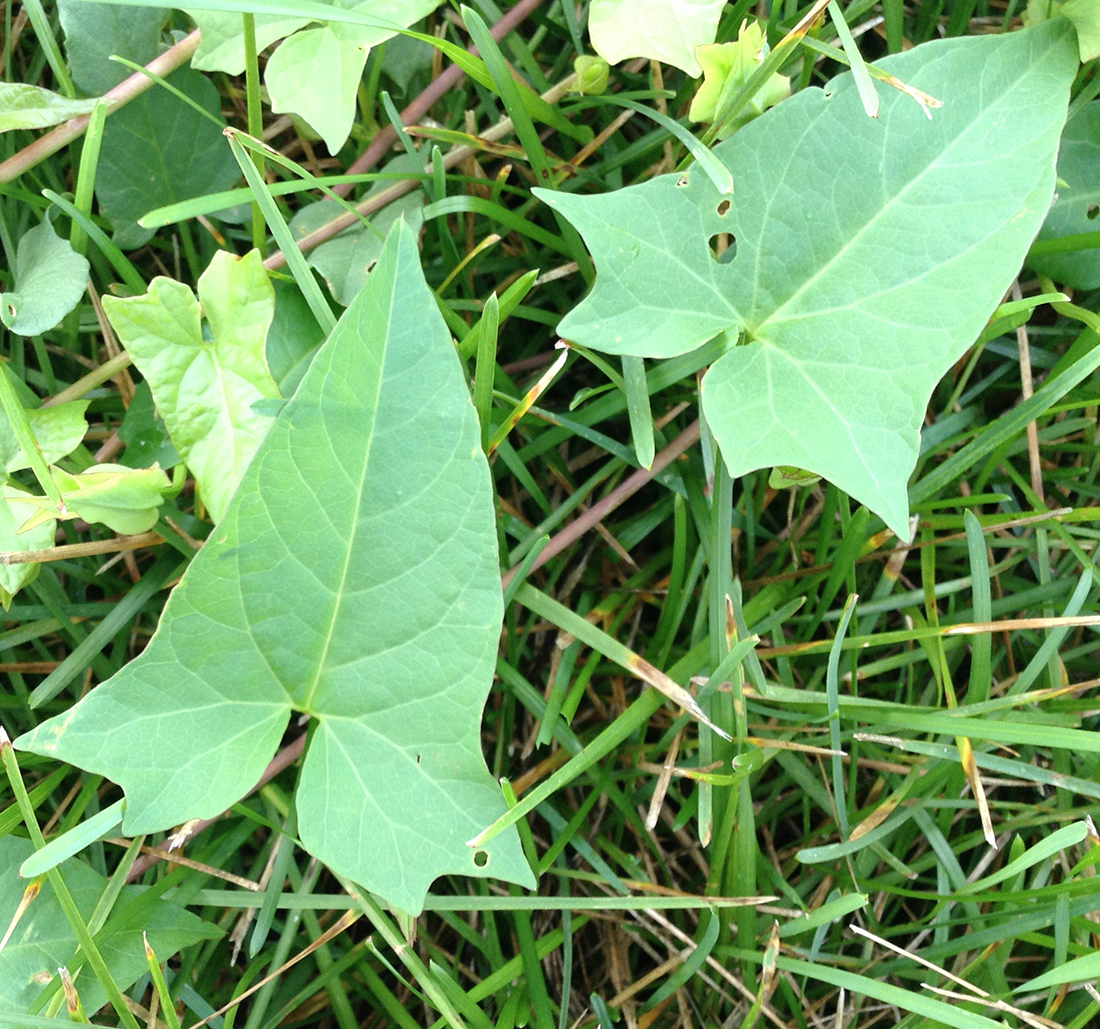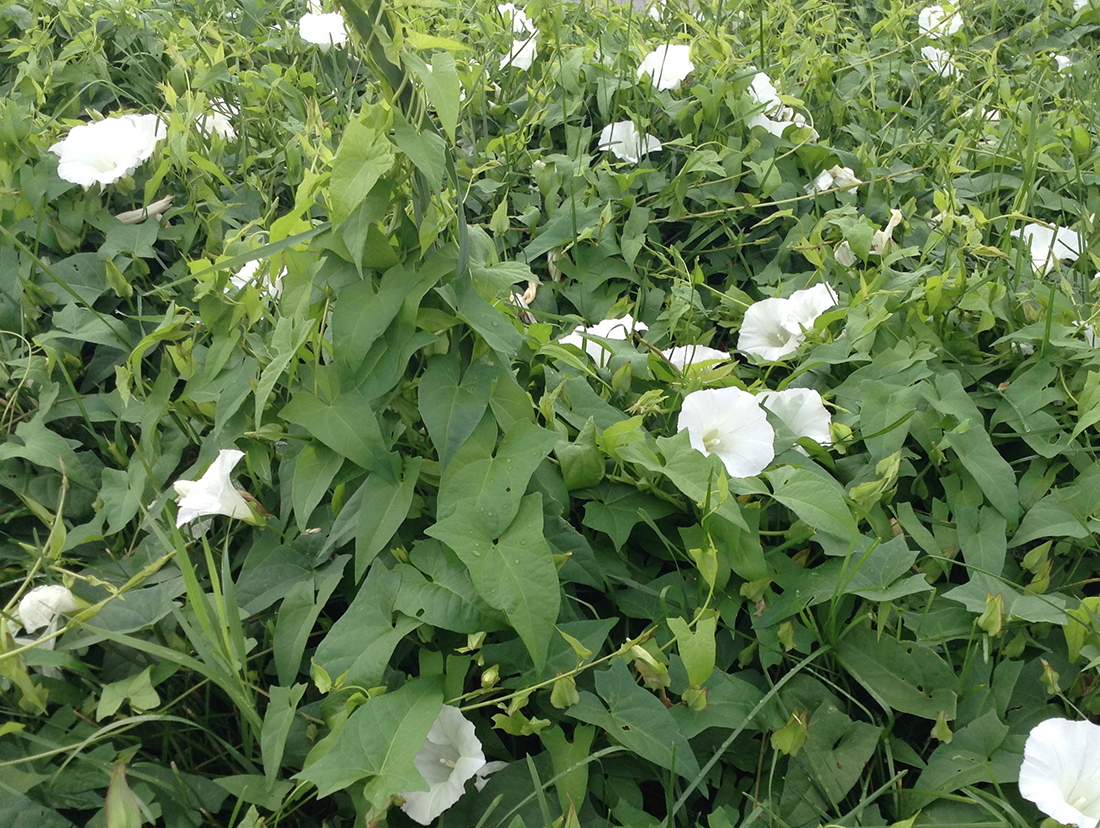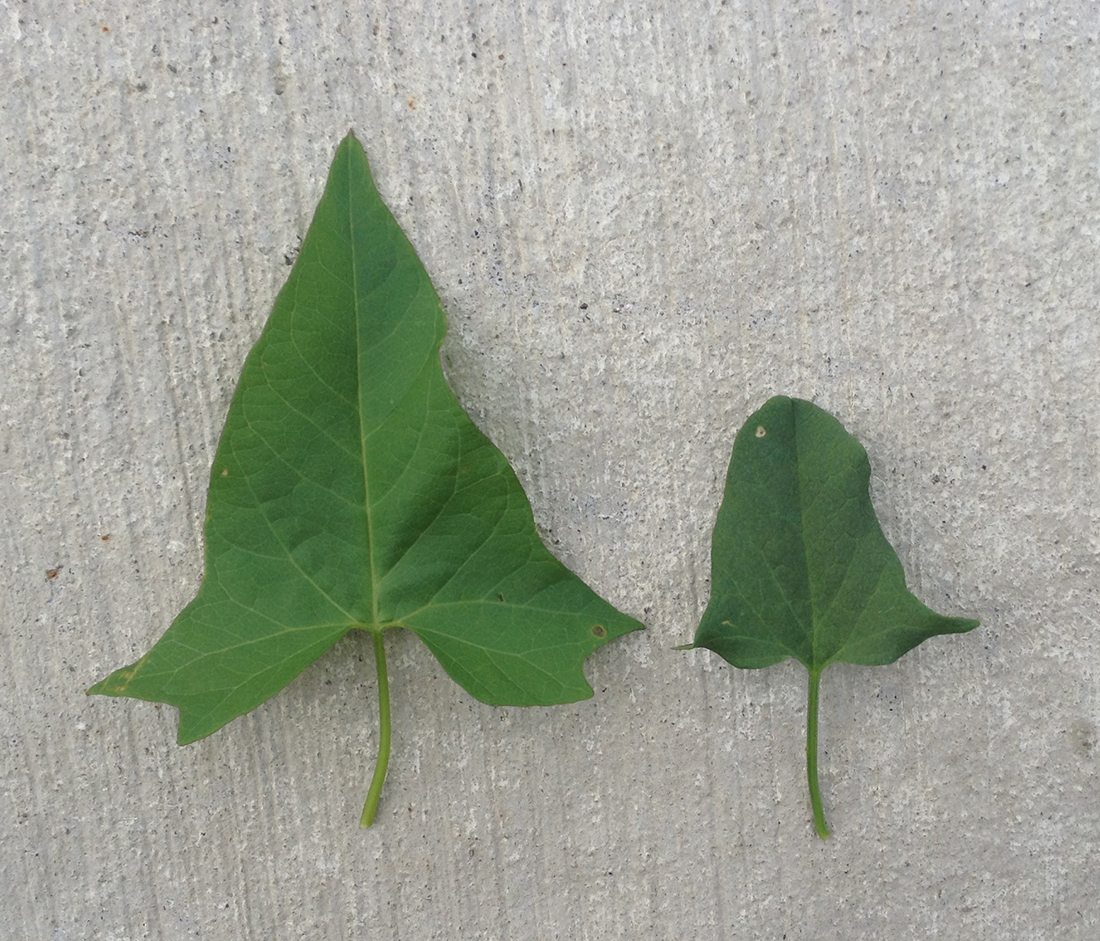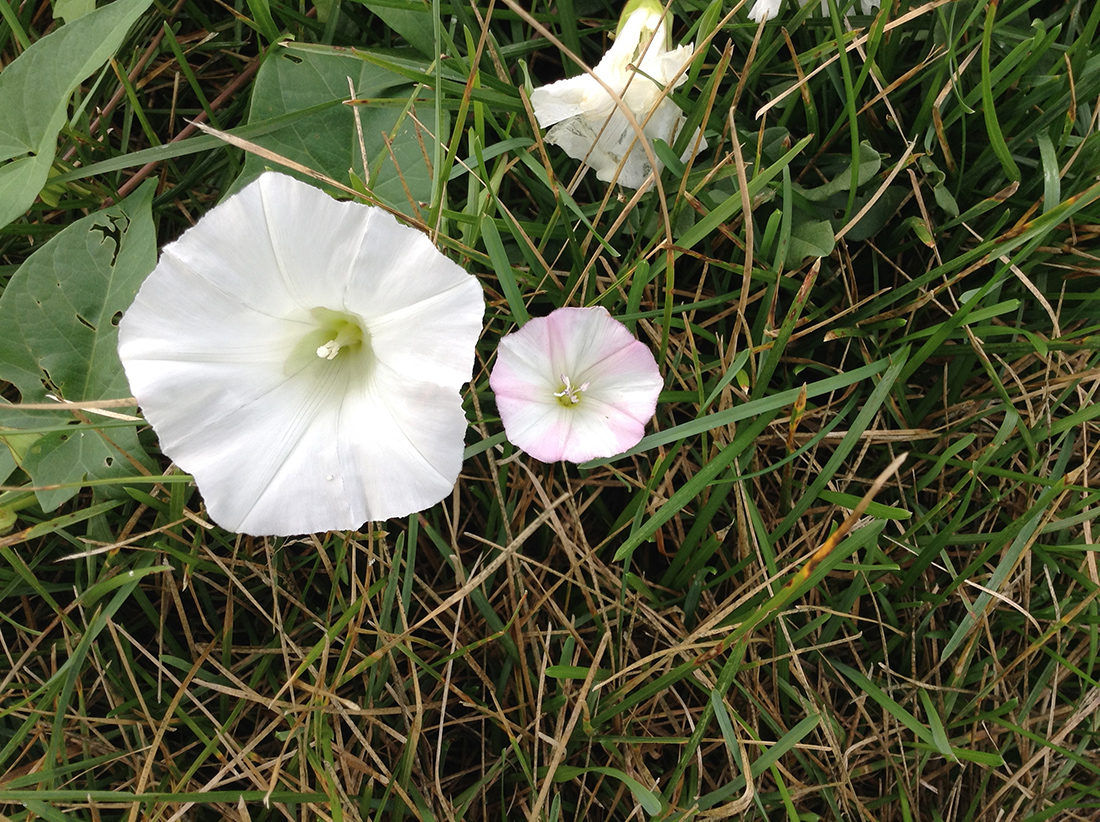Hedge Bindweed
- Morning-glory family (Convolvulaceae family):
- Calystegia sepium (L.) R. Br.
- EPPO code:
- CAGSE
- Other names:
- Hedge morning-glory, large morning-glory, wild morning-glory
Species information
- Lifecycle:
- Perennial.
- Propagation:
- Hedge bindweed reproduces by seed and by rhizomes that can persist up to 60 cm below the soil surface.
- Emergence:
- The plant requires warmer soil temperatures to germinate; therefore, it typically emerges in late spring to early summer. Germination is poor where seeds are found close to the soil surface.
- Habitat:
- Hedge bindweed is a native plant in southwestern Ontario. It is generally found in edges of woods, waste places, fence rows and open fields and occasionally in crops. It establishes in all types of soil.
- Competitiveness:
- The creeping and twining nature of hedge bindweed can lead to significant yield losses in various crops, which reduces harvesting efficiency.
Identification clues
Seedling
- Cotyledons:
- Square with prominent whitish veins, indented at the apex and base.
- First leaves:
- Oval leaves with two large basal lobes.
- Mature leaves:
- Triangular or arrow shaped with two deep basal lobes and a pointed tip (apex).
Mature plant
- Stems:
- The stem of hedge bindweed is hairless and smooth to the touch. Its twining and curling nature means that it is often found wrapped around nearby structures.
- Flowers:
- Hedge bindweed has round, morning glory-like flowers that are typically 8–10 cm in diameter, or about twice to three times the size of field bindweed. Often, the flowers are white, but they can also be pinkish-white. The base of the flower has two large bracts that hide the calyx. Flowers are produced from May to September.
- Seeds:
- Hedge bindweed’s seeds are small, growing to about 5mm in length. They are egg shaped and dark brown to black in colour.
- Roots:
- The plant has an underground root and rhizome system that has the ability to spread extensively. Its roots and rhizomes are whitish in colour.
Often mistaken for
I know it's not Wild buckwheat because wild buckwheat has an ocrea that surrounds the leaf stem at each node and it lacks the round showy morning-glory-like flowers of hedge bindweed.
I know it's not Field bindweed because hedge bindweed’s flowers are two to three times the size of field bindweed’s and have two large bracts that cover the calyx. Its leaves have a pointed tip (apex) and two deep basal lobes while field bindweed has a rounded apex and narrow lobes. They are also much larger in comparison with the smaller leaves of field bindweed.




Updated: January 13, 2023
Published: January 13, 2023